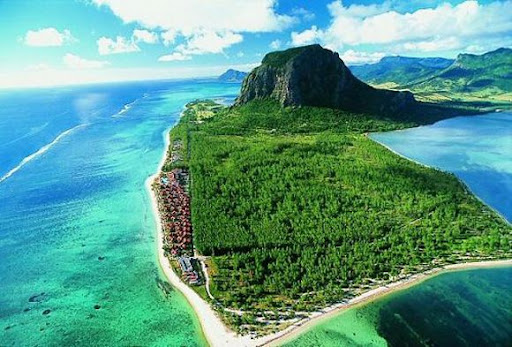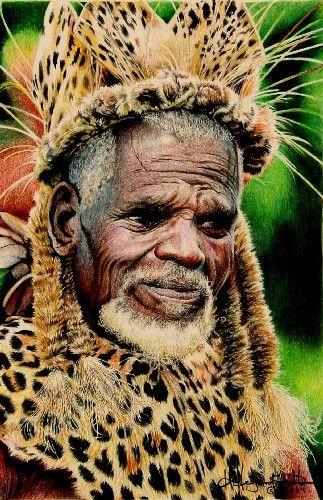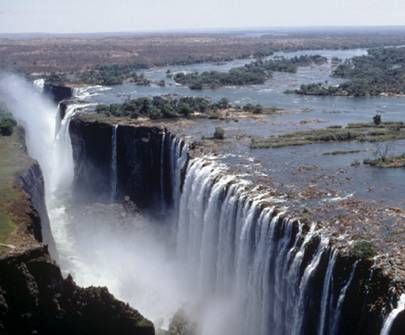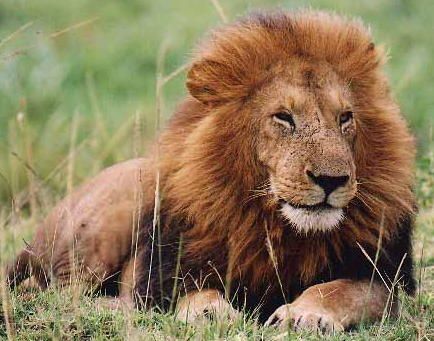|
|
Countries in Africa
Africa is the world's second-largest and second most-populous continent, after Asia. At about 30.2 million km² including adjacent islands, it covers 6% of the Earth's total surface area and 20.4% of the total land area. With a billion people in 61 territories, it accounts for about 14.72% of the World's human population. The continent is surrounded by the Mediterranean Sea to the north, both the Suez Canal and the Red Sea along the Sinai Peninsula to the northeast, the Indian Ocean to the southeast, and the Atlantic Ocean to the west. Not counting the disputed territory of Western Sahara, there are 53 countries, including Madagascar and various island groups, associated with the continent.
Africa, particularly central eastern Africa, is widely regarded within the scientific community to be the origin of humans and the Hominidae clade, as evidenced by the discovery of the earliest hominids and their ancestors, as well as later ones that have been dated to around seven million years ago – including Sahelanthropus tchadensis, Australopithecus africanus, A. afarensis, Homo erectus, H. habilis and H. ergaster – with the earliest Homo sapiens found in Ethiopia being dated to ca. 200,000 years ago.
Africa straddles the equator and encompasses numerous climate areas; it is the only continent to stretch from the northern temperate to southern temperate zones.
Africa is considered by most paleoanthropologists to be the oldest inhabited territory on Earth, with the human species originating from the continent. During the middle of the twentieth century, anthropologists discovered many fossils and evidence of human occupation perhaps as early as 7 million years ago. Fossil remains of several species of early apelike humans thought to have evolved into modern man, such as Australopithecus afarensis (radiometrically dated to approximately 3.9–3.0 million years BC),Paranthropus boisei (c. 2.3–1.4 million years BC) and Homo ergaster (c. 1.9 million–600,000 years BC) have been discovered.
Throughout humanity's prehistory, Africa (like all other continents) had no nation states, and was instead inhabited by groups of hunter-gatherers such as the Khoi and San.
At the end of the Ice Ages, estimated to have been around 10,500 BC, the Sahara had again become a green fertile valley, and its African populations returned from the interior and coastal highlands in Sub-Saharan Africa. However, the warming and drying climate meant that by 5000 BC the Sahara region was becoming increasingly dry and hostile. The population trekked out of the Sahara region towards the Nile Valley below the Second Cataract where they made permanent or semi-permanent settlements. A major climatic recession occurred, lessening the heavy and persistent rains in Central and Eastern Africa. Since this time dry conditions have prevailed in Eastern Africa, and increasingly during the last 200 years, in Ethiopia.
The domestication of cattle in Africa preceded agriculture and seems to have existed alongside hunter-gathering cultures. It is speculated that by 6000 BC cattle were already domesticated in North Africa. In the Sahara-Nile complex, people domesticated many animals including the donkey, and a small screw-horned goat which was common from Algeria to Nubia. In the year 4000 BC the climate of the Sahara started to become drier at an exceedingly fast pace. This climate change caused lakes and rivers to shrink significantly and caused increasing desertification. This, in turn, decreased the amount of land conducive to settlements and helped to cause migrations of farming communities to the more tropical climate of West Africa.
By the first millennium BC ironworking had been introduced in Northern Africa and quickly spread across the Sahara into the northern parts of sub-Saharan Africa and by 500 BC metalworking began to become commonplace in West Africa. Ironworking was fully established by roughly 500 BC in many areas of East and West Africa, although other regions didn't begin ironworking until the early centuries AD. Copper objects from Egypt, North Africa, Nubia and Ethiopia dating from around 500 BC have been excavated in West Africa, suggesting that trans-saharan trade networks had been established by this date.
At about 3300 BC, the historical record opens in Northern Africa with the rise of literacy in the Pharaonic civilisation of Ancient Egypt. One of the world's earliest and longest-lasting civilizations, the Egyptian state continued, with varying levels of influence over other areas, until 343 BC. Egyptian influence reached deep into modern-day Libya, north to Crete and Canaan, and south to the kingdoms of Aksum and Nubia. An independent centre of civilisation with trading links to Phoenicia was established on the north-west African coast at Carthage.
European exploration of Africa began with Ancient Greeks and Romans. In 332 BC, Alexander the Great was welcomed as a liberator in Persian-occupied Egypt. He founded Alexandria in Egypt, which would become the prosperous capital of the Ptolemaic dynasty after his death. Following the conquest of North Africa's Mediterranean coastline by the Roman Empire, the area was integrated economically and culturally into the Roman system. Roman settlement occurred in modern Tunisia and elsewhere along the coast. Christianity spread across these areas from Palestine via Egypt, also passing south, beyond the borders of the Roman world into Nubia and by at least the 6th century into Ethiopia.
In the early 7th century, the newly formed Arabian Islamic Caliphate expanded into Egypt, and then into North Africa. In a short while the local Berber elite had been integrated into Muslim Arab tribes. When the Ummayad capital Damascus fell in the eight century, the Islamic center of the Mediterranean shifted from Syria to Qayrawan in North Africa. Islamic North Africa had become diverse, and a hub for mystics, scholars, jurists and philosophers. During the above mentioned period, Islam spread to sub-Saharan Africa, mainly through trade routes and migration.
Pre-colonial Africa possessed perhaps as many as 10,000 different states and polities characterised by many different sorts of political organisation and rule. These included small family groups of hunter-gatherers such as the San people of southern Africa; larger, more structured groups such as the family clan groupings of the Bantu-speaking people of central and southern Africa, heavily structured clan groups in the Horn of Africa, the large Sahelian Kingdoms, and autonomous city-states and kingdoms such as those of the Yoruba and Igbo people (also misspelled as Ibo) in West Africa, and the Swahili coastal trading towns of East Africa.
By the 9th century AD a string of dynastic states, including the earliest Hausa states, stretched across the sub-saharan savannah from the western regions to central Sudan. The most powerful of these states were Ghana, Gao, and the Kanem-Bornu Empire. Ghana declined in the 11th century but was succeeded by the Mali Empire which consolidated much of western Sudan in the 13th century. Kanem accepted Islam in the 11th century.
In the forested regions of the West African coast, independent kingdoms grew up with little influence from the Muslim north. The Kingdom of Nri of the Igbo was established around the 9th century and was one of the first. It is also one of the oldest Kingdom in modern day Nigeria and was ruled by the Eze Nri. The Nri kingdom is famous for its elaborate bronzes, found at the town of Igbo Ukwu. The bronzes have been dated from as far back as the 9th century.
The Ife, historically the first of these Yoruba city-states or kingdoms, established government under a priestly oba, (oba means 'king' or 'ruler' in the Yoruba language), called the Ooni of Ife. Ife was noted as a major religious and cultural centre in Africa, and for its unique naturalistic tradition of bronze sculpture. The Ife model of government was adapted at Oyo, where its obas or kings, called the Alaafins of Oyo once controlled a large number of other Yoruba and non Yoruba city states and Kingdoms, the Fon Kingdom of Dahomey was one of the non Yoruba domains under Oyo control.
The Almoravids, was a Berber dynasty from the Sahara that spread over a wide area of northwestern Africa and the Iberian peninsula during the 11th century. The Banu Hilal and Banu Ma'qil were a collection of Arab Bedouin tribes from the Arabian peninsula who migrated westwards via Egypt between the 11th and 13th centuries. Their migration resulted in the fusion of the Arabs and Berbers, where the locals were Arabized, and Arab culture absorbed elements of the local culture, under the unifying framework of Islam.
Following the breakup of Mali a local leader named Sonni Ali (1464–1492) founded the Songhai Empire in the region of middle Niger and the western Sudan and took control of the trans-Saharan trade. Sonni Ali seized Timbuktu in 1468 and Jenne in 1473, building his regime on trade revenues and the cooperation of Muslim merchants. His successor Askia Mohammad I (1493–1528) made Islam the official religion, built mosques, and brought Muslim scholars, including al-Maghili (d.1504), the founder of an important tradition of Sudanic African Muslim scholarship, to Gao. By the 11th century some Hausa states – such as Kano, jigawa, Katsina, and Gobir – had developed into walled towns engaging in trade, servicing caravans, and the manufacture of goods. Until the 15th century these small states were on the periphery of the major Sudanic empires of the era, paying tribute to Songhai to the west and Kanem-Borno to the east.
In the late nineteenth century, the European imperial powers engaged in a major territorial scramble and occupied most of the continent, creating many colonial nation states, and leaving only two independent nations: Liberia, an independent state partly settled by African Americans; and Orthodox Christian Ethiopia (known to Europeans as "Abyssinia"). Colonial rule by Europeans would continue until after the conclusion of World War II, when all colonial states gradually obtained formal independence.
Independence movements in Africa gained momentum following World War II, which left the major European powers weakened. In 1951, Libya, a former Italian colony, gained independence. In 1956, Tunisia and Morocco won their independence from France. Ghana followed suit the next year, becoming the first of the sub-Saharan colonies to be freed. Most of the rest of the continent became independent over the next decade, most often through relatively peaceful means, though in some countries, notably Algeria, it came only after a violent struggle. Though South Africa was one of the first African countries to gain independence, it remained under the rule of its white settler population, in a policy known as Apartheid, until 1994.
Today, Africa contains 53 independent and sovereign countries, most of which still have the borders drawn during the era of European colonialism. Since colonialism, African states have frequently been hampered by instability, corruption, violence, and authoritarianism. The vast majority of African nations are republics that operate under some form of the presidential system of rule. However, few of them have been able to sustain democratic governments, and many have instead cycled through a series of coups, producing military dictatorships. A number of Africa's post-colonial political leaders were military generals who were poorly educated and ignorant on matters of governance. Great instability, however, was mainly the result of marginalization of other ethnic groups and graft under these leaders. For political gain, many leaders fanned ethnic conflicts that had been exacerbated, or even created, by colonial rule. In many countries, the military was perceived as being the only group that could effectively maintain order, and it ruled many nations in Africa during the 1970s and early 1980s. During the period from the early 1960s to the late 1980s, Africa had more than 70 coups and 13 presidential assassinations. Border and territorial disputes were also common, with the European-imposed borders of many nations being widely contested through armed conflicts.
Cold War conflicts between the United States and the Soviet Union, as well as the policies of the International Monetary Fund, also played a role in instability. When a country became independent for the first time, it was often expected to align with one of the two superpowers. Many countries in Northern Africa received Soviet military aid, while many in Central and Southern Africa were supported by the United States, France or both. The 1970s saw an escalation, as newly independent Angola and Mozambique aligned themselves with the Soviet Union, and the West and South Africa sought to contain Soviet influence by funding insurgency movements. There was a major famine in Ethiopia, when hundreds of thousands of people starved. Some claimed that Marxist/Soviet polices made the situation worse.
The most devastating military conflict in modern independent Africa has been the Second Congo War. By 2008, this conflict and its aftermath had killed 5.4 million people. Since 2003 there has been an ongoing conflict in Darfur which has become a humanitarian disaster. AIDS has also been a prevalent issue in post-colonial Africa.









No comments:
Post a Comment